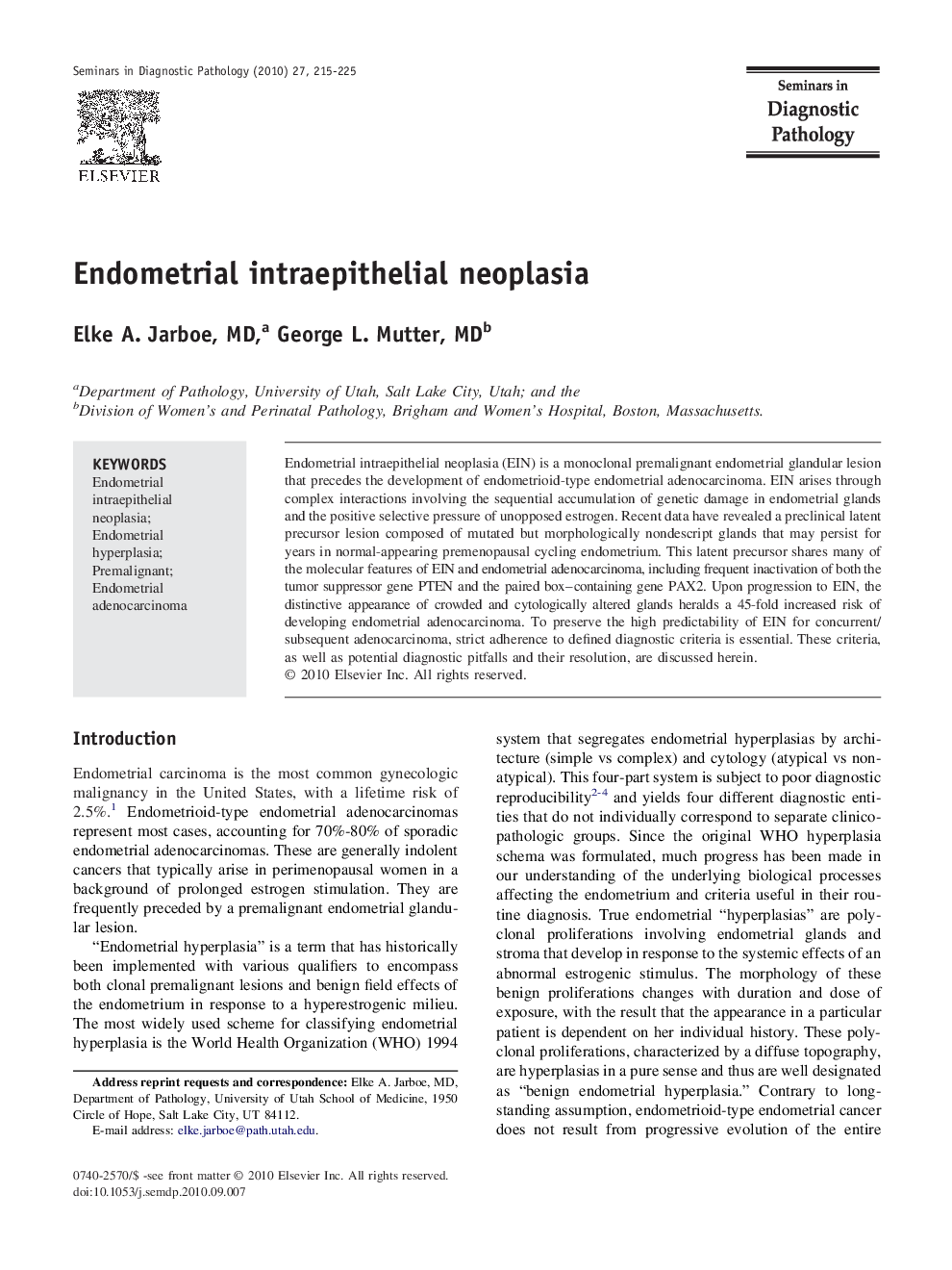| Article ID | Journal | Published Year | Pages | File Type |
|---|---|---|---|---|
| 4138492 | Seminars in Diagnostic Pathology | 2010 | 11 Pages |
Endometrial intraepithelial neoplasia (EIN) is a monoclonal premalignant endometrial glandular lesion that precedes the development of endometrioid-type endometrial adenocarcinoma. EIN arises through complex interactions involving the sequential accumulation of genetic damage in endometrial glands and the positive selective pressure of unopposed estrogen. Recent data have revealed a preclinical latent precursor lesion composed of mutated but morphologically nondescript glands that may persist for years in normal-appearing premenopausal cycling endometrium. This latent precursor shares many of the molecular features of EIN and endometrial adenocarcinoma, including frequent inactivation of both the tumor suppressor gene PTEN and the paired box–containing gene PAX2. Upon progression to EIN, the distinctive appearance of crowded and cytologically altered glands heralds a 45-fold increased risk of developing endometrial adenocarcinoma. To preserve the high predictability of EIN for concurrent/subsequent adenocarcinoma, strict adherence to defined diagnostic criteria is essential. These criteria, as well as potential diagnostic pitfalls and their resolution, are discussed herein.
